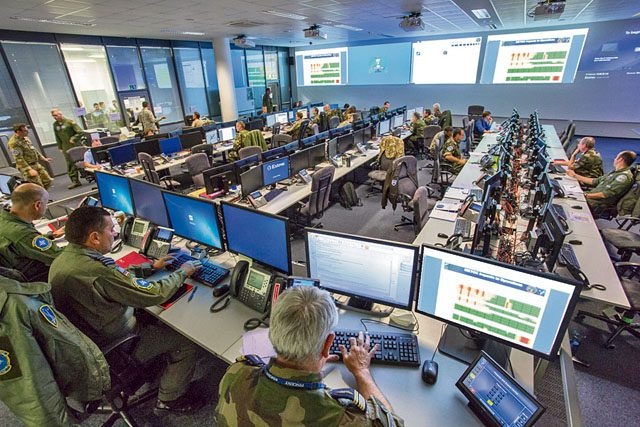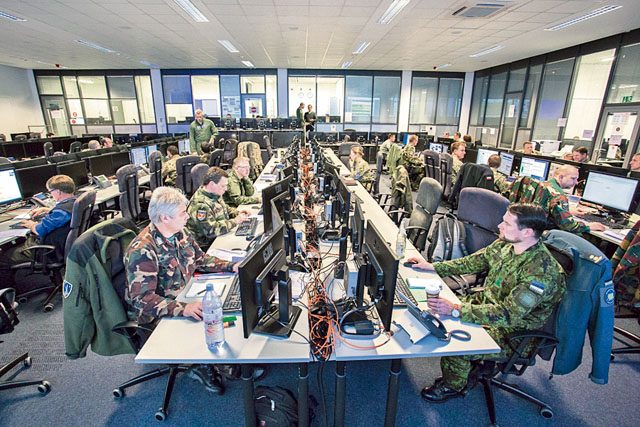
International NATO staff work during command post exercise Trident Juncture 2016. The staff from Headquarters Allied Air Command was augmented by experts from other NATO and national air units to stand up a 300-personnel Joint Force Air Component. The team, headed by Brig. Gen. Kevin Huyck, provides air and space support to the Joint Force Command in Naples, Italy, in a fictitious collective defense scenario. The exercise was part of the preparation of NATO force headquarters for their standby period of the NATO Response Force 2017.
From Oct. 24 through Nov. 2, Headquarters Allied Air Command supported NATO’s command post exercise Trident Juncture 2016. The headquarters was bustling with activity with over 300 personnel, including 100 reinforcing personnel, standing up the Joint Force Air Component — the command element that is in charge of planning, tasking and executing approximately 200 simulated sorties of allied air assets per day.
“Several NATO and national air units are supporting and augmenting this joint effort to provide air and space power to the exercise play,” says Brig. Gen. Kevin Huyck, HQ AIRCOM deputy chief of staff operations and JFAC director during TRJE16. “We provide the air component dimension for Joint Force Command Naples for their leading role in the NATO Response Force in 2017.”
Besides NATO’s AIRCOM, Headquarters Allied Rapid Reaction Corps and Strike Force NATO contributed to the command post exercise, allowing the Joint Force Command to demonstrate the alliance’s ability to plan and execute a major joint operation. The exercise was conducted using a comprehensive approach involving a range of international state and nonstate actors to address simulated crisis situations.
“The exercise uses a complex synthetic Article V Collective Defence scenario,” Huyck added. “We use this opportunity to plan, train and execute across the NATO command structure. I am looking forward to a successful exercise as this professional AIRCOM JFAC team sharpens their skills to provide appropriate, timely and effective support to the joint level.”
Command post exercises like TRJE 16 assure allies of NATO’s capability, resolve and commitment to collective defence. NATO is vigilant and ready to respond to threats and emerging security challenges.
Trident Juncture 2016 unfolded at allied military headquarters in Italy, Norway, the United Kingdom, Belgium, Germany and on board NATO ships afloat.



